
Recognize the signs of heat exhaustion & heat cramps. Learn to spot the signs of heat illness before it turns into heat stroke. Left untreated can slow you down!
You don’t have to be running a marathon or working on a construction site to feel the effects of heat and sun. Even everyday activities like exercising outside, working in the garden, or taking a long walk during the hottest part of the day can quietly push your body temperature into dangerous territory. Often, the early signs of heat-related illness—like dehydration and heat cramps—are easy to miss until they slow you down or lead to more serious problems.
Staying alert to your body’s signals is key to protecting your health, especially during the intense summer months. Fortunately, with smart hydration habits, the right clothing and gear, and innovative tools like MISSION’s evaporative cooling technology, you can stay cool, stay active, and avoid falling victim to the heat.
Let’s dive into how to spot these early warnings and the simple steps you can take to keep heat illness at bay.
Why Your Body Struggles to Stay Cool on Hot Days
Your body is equipped with natural defenses to handle heat, but during higher temperatures and heat exposure, these systems can quickly become overwhelmed. When you're sweating a lot—whether from intense physical activity or simply working outdoors—you lose vital fluid and electrolyte levels faster than they can be replenished. This not only leads to dehydration, but it also impairs your body’s ability to cool itself effectively.
Heavy sweat causes your body to lose important minerals like sodium and potassium, both of which are critical for muscle function and temperature regulation. As the heat index rises, your heart works harder to circulate blood near the skin’s surface to release radiating heat, creating additional strain on your system. Without proper fluid and electrolyte balance, your body can spiral into various forms of heat illness, including heat cramps, heat exhaustion, or even heatstroke.
Wearing breathable fabric, choosing smart cooling gear like MISSION’s cooling towels or hats, and staying consistently hydrated are essential ways to prevent heat from gaining the upper hand on hot days. Proactively supporting your body's natural cooling system keeps you safe, healthy, and performing at your best—even under extreme conditions.
Recognizing Early Symptoms of Dehydration
Dehydration often sneaks up quietly and spotting it early can prevent more serious heat-related illnesses. Some of the first symptoms of dehydration include dry mouth, thirst, headache, dizziness, and reduced urine output. You may also notice fatigue setting in quicker than usual during a workout or outdoor activity.
If left untreated, dehydration can quickly escalate into more serious problems, particularly on hot days or when working or exercising in direct sunlight. The risk increases when the body’s fluid and electrolyte balance becomes severely disrupted, impairing muscle function and circulation.
The best strategy for managing dehydration is early action. Drink plenty of fluids throughout the day. Water or an electrolyte-enhanced sports drink are the best options for replacing the fluids lost through sweating. Avoid excessive caffeine or alcohol, as they can further dehydrate the body. Cooling your skin can also help regulate your temperature and prevent the onset of more serious conditions.
Recognizing and responding to the warning signs of dehydration is one of the simplest but most powerful ways to stay healthy and active all summer long.
Heat Cramps Are Painful Muscle Spasms: Identifying the Warning Signs
Heat cramps are often one of the first clear indicators that your body is struggling to manage heat and sun exposure. These painful muscle spasms typically occur during or after intense physical activity, especially when you’ve been sweating a lot and losing important minerals like sodium and potassium.
Heat cramps may feel sharp, sudden, and involuntary, usually affecting muscles in the legs, arms, or abdomen. This form of heat illness signals that your body’s fluid or electrolyte levels are depleted, and immediate action is necessary to prevent more serious conditions like heat exhaustion or heatstroke.
At the first sign of cramping, get out of the heat and find a shaded or air-conditioned area to rest. Gently stretch and massage the affected muscles, and rehydrate with plenty of fluids—preferably a sports drink that replenishes both water and salt. Avoid quickly returning to vigorous activity until all cramping subsides and you're fully rehydrated.
Recognizing muscle cramps early allows you to intervene before your body’s ability to cool fails entirely. Staying ahead of heat cramps and heat exhaustion is one of the best ways to prevent heat illness and stay safely active during the hottest parts of the year.
Heat Exhaustion or Heat Stroke? Spotting the Critical Difference

When it comes to serious heat-related illnesses, knowing the difference between heat exhaustion and heat stroke can be lifesaving. Both conditions are triggered by heat exposure and the body’s inability to cool itself properly, but they require very different levels of intervention.
Heat exhaustion is the body’s warning that it’s overheating. Common signs of heat exhaustion include heavy sweating, weakness, dizziness, headache, nausea, and cool, clammy skin. If you notice these symptoms, it’s important to immediately get out of the heat, rest in a cool place, and start rehydrating with plenty of fluids.
Heatstroke, on the other hand, is a medical emergency. It occurs when the body temperature rises to dangerously high levels and the body can no longer regulate itself. Symptoms of heat stroke include a lack of sweating despite the heat, confusion, slurred speech, rapid pulse, and loss of consciousness. If heatstroke is suspected, call for medical care immediately and begin cooling the body with cold towels, ice packs, or an air-conditioned environment while waiting for help.
Recognizing the progression from heat exhaustion or heat stroke is critical. Acting quickly at the early stages can prevent long-term damage and even save a life.
The Best Way to Prevent Heat Cramps and Dehydration
The best way to prevent heat cramps and dehydration is to stay ahead of the heat before it becomes a problem. This starts with smart preparation: drinking plenty of fluids throughout the day, choosing hydrating beverages like sports drinks when needed, and taking regular breaks during intense physical activity. It's also important to recognize that your clothing plays a major role in keeping your body temperature regulated.
Wearing lightweight, breathable fabric can help sweat evaporate and cool your skin more efficiently. Opt for gear that not only protects you from the sun but actively works to cool the body. Cooling products like those from MISSION use technology to help your body handle heat more easily on hot days.
Other simple strategies include planning outdoor activities during cooler parts of the day, staying in shaded or air-conditioned spaces whenever possible, and listening to early warning signs like cramps, dizziness, or unusual fatigue. By combining proper hydration, thoughtful clothing, and smart cooling tools, you can lower your risk of heat illness and keep enjoying your favorite activities safely, even in higher temperatures.
Special Risk Groups: Children and People Most Susceptible to Heat
Some individuals face a much higher risk of developing heat-related illnesses during extreme heat, and extra precautions are necessary. Children and people with chronic medical conditions, including heart or respiratory issues, are particularly vulnerable because their body’s ability to cool may not function as efficiently. Older adults, who often have a slower body temperature response, are also at greater risk, especially when working or exercising outdoors.
To protect these groups, it’s important to encourage regular hydration with plenty of fluids, make use of air-conditioned spaces, and avoid being outdoors during the hottest parts of the day. Clothing made from lightweight, breathable fabric can make a noticeable difference, and using additional cooling gear like hats and cooling towels can help keep them safer and more comfortable.
Monitoring for early symptoms of dehydration, muscle cramps, or confusion is critical. Taking even small steps to protect vulnerable individuals can greatly reduce the risk of heat exhaustion, heat cramps, or more serious conditions like heatstroke.
Stay Ahead of Heat-Related Illnesses This Summer
Heat cramps, dehydration, and heat exhaustion don't happen all at once—they often start with small warning signs your body gives you when it's struggling to stay cool. By staying alert, hydrating with plenty of fluids, wearing the right clothing, and using smart gear like cooling towels and hats, you can dramatically lower your risk of heat illness, even during the hottest parts of the year.
Simple choices—like recognizing early symptoms, taking breaks in a cool place, and making hydration part of your daily routine—can make a major difference. Don't wait until symptoms slow you down. Explore MISSION’s cooling solutions today to help cool the body, stay active, and enjoy every moment outdoors this summer—safely and comfortably.

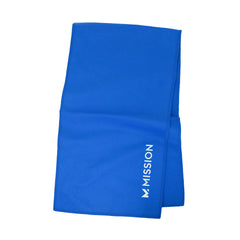
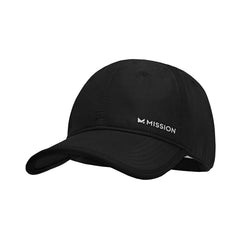
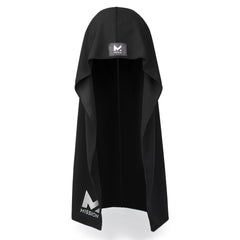

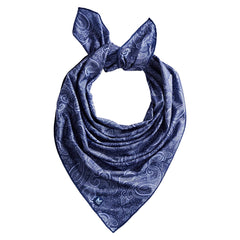
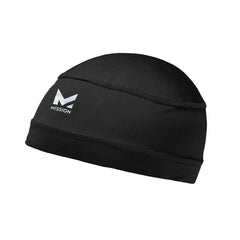


20 comments
srxim9
srxim9
9ii5l7
lmzkma
jewtv1
Leave a comment